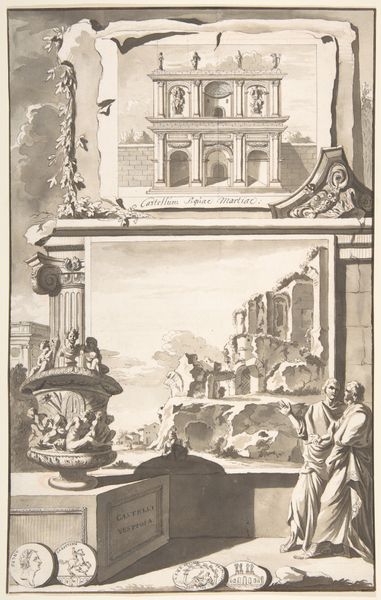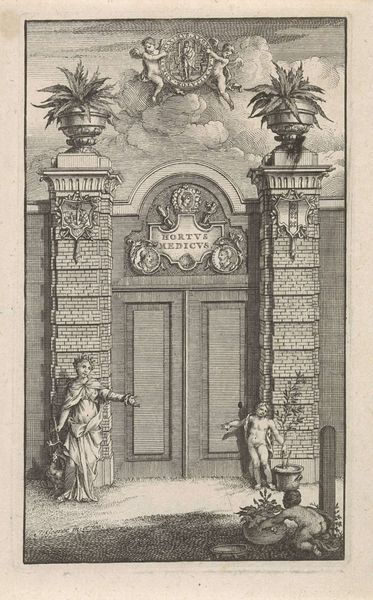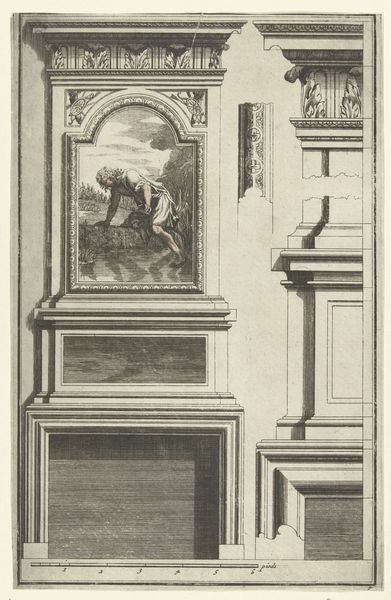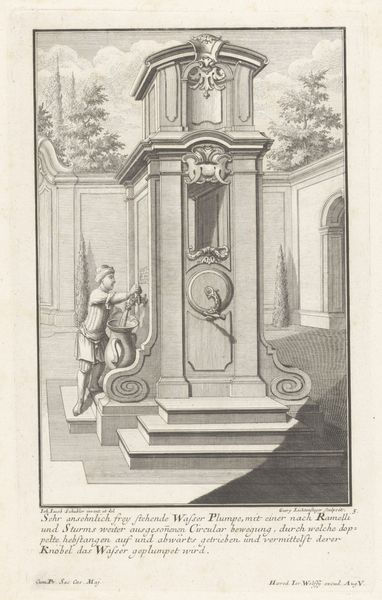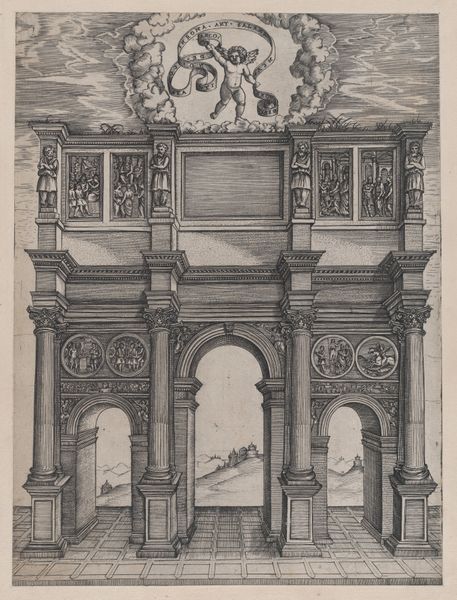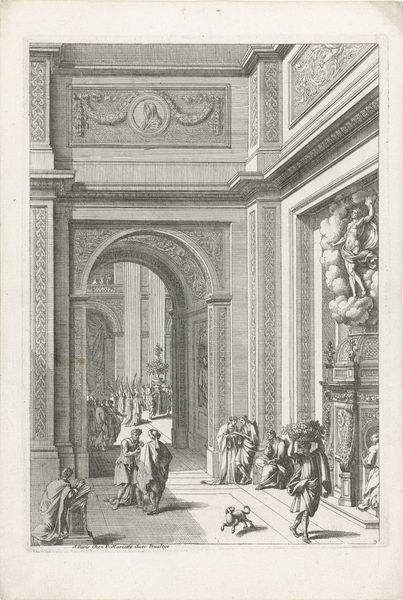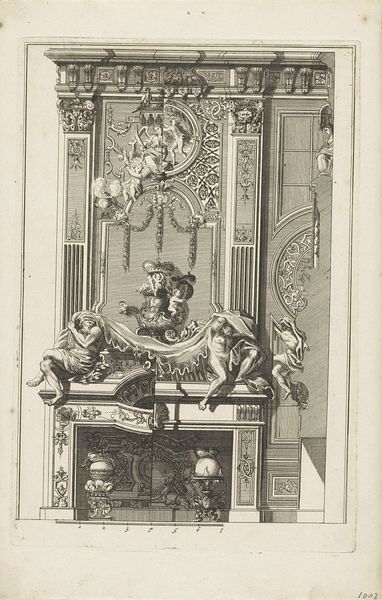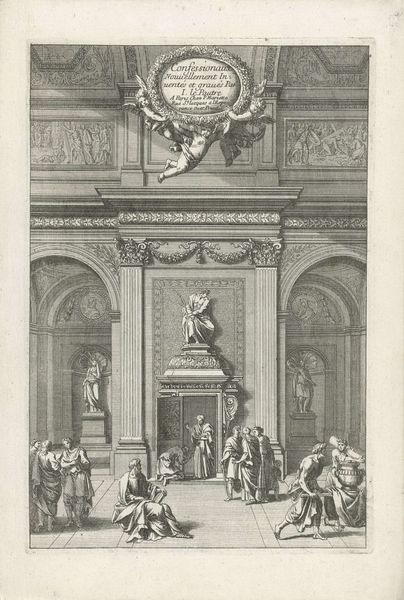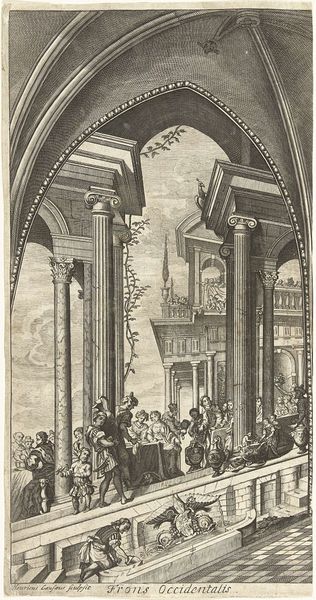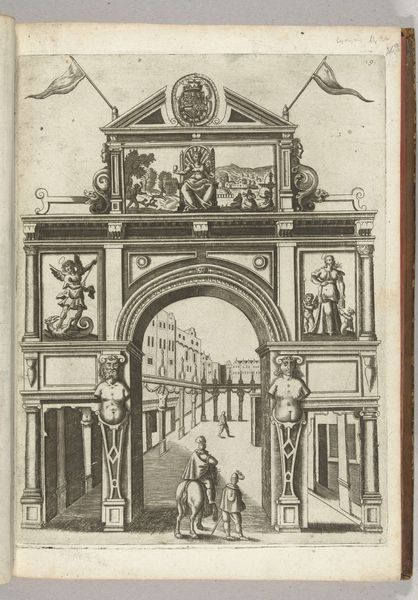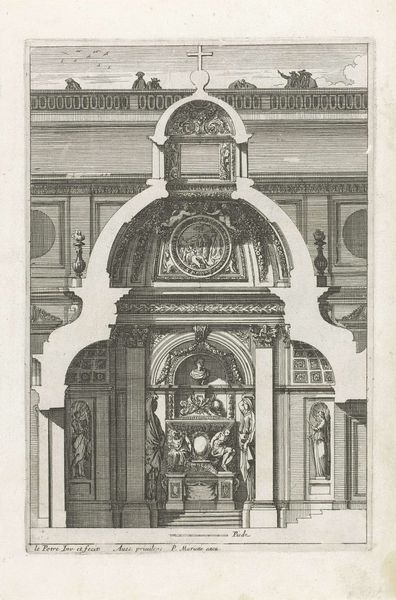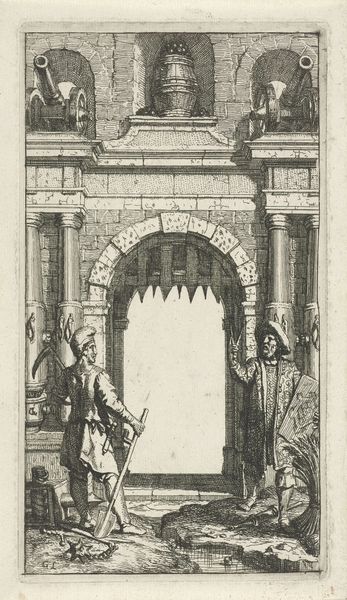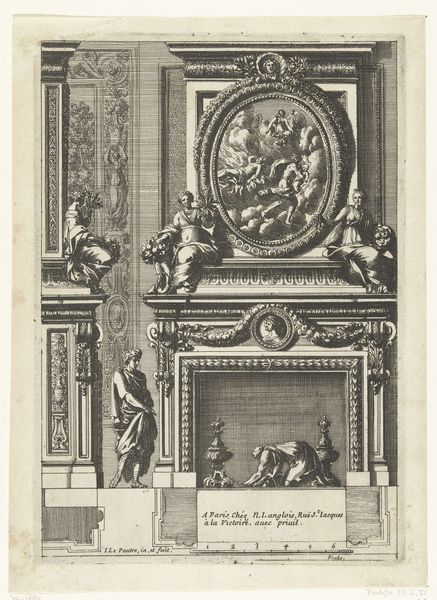
drawing, print, engraving, architecture
#
drawing
#
baroque
# print
#
engraving
#
architecture
Dimensions: height 316 mm, width 180 mm
Copyright: Rijks Museum: Open Domain
Curator: Jan van Vianen created this print titled "Twee Poorten," or "Two Gates," around 1697. It’s an engraving displayed at the Rijksmuseum. My first impression? It feels like a carefully constructed study in contrasts, with a tension between classical structure and whimsical ornamentation. Editor: The sharp lines are lovely, it provides a sense of formality and precision but somehow playful. The composition, dividing the page between these two distinct archways, forces you to consider each structure’s unique characteristics. Curator: Indeed. Each archway signifies more than mere architectural detail; it signifies an understanding of the cultural value. In the Baroque period, these gates stood for access, prestige, power—literally who gets in. The placement on the page, divided but sharing the same space, echoes a negotiation between secular and ecclesiastical authority perhaps? Editor: Yes, perhaps. And notice the use of light and shadow, particularly how it defines the texture of the brick in the lower panel versus the smoother finish in the arch above. I can clearly observe that van Vianen wanted the viewer to experience depth and material reality simply by observing this work. Curator: It's an interesting conversation about that reality, wouldn't you agree? With the cherubs that are situated to highlight an understanding about privilege within the society that creates the piece of work. Those small additions open it up for discourse within society as to why something is being made. Is it supposed to celebrate the design, or to highlight what already is in place within that society? Editor: Both. The figures certainly contribute to the baroque aesthetic; however, these details emphasize classical architectural forms while still giving an aura of delight, wouldn’t you agree? This balance helps with appreciating Baroque art and understanding how integral semiotics play in such styles. Curator: Well, yes. I see this artistic strategy as working with social and historical influences, while still exploring those social issues inherent during those historical periods—it brings me a new understanding of society's elite members versus the plebian. Editor: It appears we both agree the piece holds complexity. I walk away with renewed insight regarding its balanced composition and semiotic components. Curator: And I, with fresh questions on the work’s place within Dutch societal and artistic thought of its day.
Comments
No comments
Be the first to comment and join the conversation on the ultimate creative platform.
